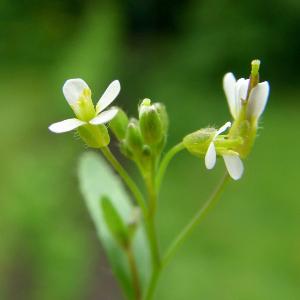To listen is to survive
1 Jul 2020
Researchers at Helmholtz Zentrum München and LMU mapped the signaling network in plants and discovered novel insights about how plants process information about their environment.
1 Jul 2020
Researchers at Helmholtz Zentrum München and LMU mapped the signaling network in plants and discovered novel insights about how plants process information about their environment.

© imago images / blickwinkel
Plants must constantly integrate information on the availability of water and nutrients or about the presence of pathogens to produce fruits and seeds for reproduction, heavily used for human consumption. Given the increasing threat of droughts and the requirements of sustainable plant protection it is important to better understand the molecular mechanisms behind the information processing of plants. So far, different plant hormones were known to trigger molecular signaling pathways that result in developmental transitions like fruit ripening or drought response. While the signaling pathways are well studied, it remained enigmatic how the information exchange between them exactly works.
A team at the Institute of Network Biology at Helmholtz Zentrum München with the participation of LMU biologists charted the molecular protein network of plants by experimentally testing more than 17 million protein pairs for physical interactions using a next-gen robotics pipeline combined with latest bioinformatics methods. The network of more than 2,000 observed protein interactions was analyzed using bioinformatic mathematical approaches form statistics and graph theory to find the signaling pathways and potential information exchange points. This way the researchers identified hundreds of these points which were not known before.
Next, by using genetic tests, they could show that all tested information exchange points between proteins that were thought to function in single signaling pathways, in fact, organize the communication between different pathways. “This was one of the most striking new insights from this study: Most proteins function in multiple signaling pathways. Moreover, in contrast to single-gene analyses, our results revealed the high degree in which different pathways are physically and functionally intertwined. We believe that this is a fundamental principle and we need to pay more attention to it”, says Dr. Melina Altmann, first-author of the study.
Head of Studies Pascal Falter-Braun, Director of the Institute for Network Biology and Professor at the Ludwig-Maximilians-University, adds: “This insight might open new strategies for biotechnological development or breeding of plants to address the challenges of climate change in farming. We might be able to redirect the information in crops such that the plants require less fertilizer or pesticides or are more resistant against droughts.”Nature, 2020.